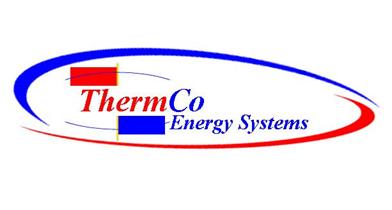

|
Lighting Solutions |

|
Lighting in commercial business, in most cases, is the second largest consumer of energy. In residential, in most cases, the hot water comes in second and lighting comes in third. With new energy saving bulbs, homeowners have recognized with a simple bulb replacement will save energy. In commercial applications the lighting consumption is in the bulbs, lamps and fixtures. |
|
Total Energy Conservation Products |
What is a CFL Light Bulb?CFLs produce light differently than incandescent bulbs. In an incandescent bulb, electric current runs through a wire filament and heats the filament until it starts to glow. In a CFL bulb, an electric current is sent through a tube containing argon and a small amount of mercury vapor. This generates invisible ultraviolet light that excites a fluorescent phosphor on the inside of the tube, which then emits visible light. When they are first turned on the CFL uses a little more energy , but once the electricity starts generating the use about 60 to 75 percent less energy than incandescent bulbs. A CFL’s utilizes a small ballast to help it start and then regulates the current once the electricity starts flowing. Older CFLs used large and heavy magnetic ballasts that caused a buzzing noise in some bulbs. Today all ENERGY STAR qualified CFLs use electronic ballasts, which do not buzz or hum. |

|
Incandescent bulbs create light by passing electricity through a metal filament until it becomes so hot that it glows. Incandescent bulbs release 90% of their energy as heat. |
|
LED lighting products use light emitting diodes to produce a very efficient light. The movement of electrons through a semiconductor material illuminates the tiny light sources known as LEDs. A small amount of heat is released backwards, into a heat sink. LEDs are basically cool to the touch. |
|
We believe when it comes to lighting solutions the decision in using the best energy saving bulb is important, but the design in the overall system should be considered. In residential and commercial the total design should be a smart system. Utilizing interior motions sensors and timers alone will reduce energy consumption and gain excellent savings over its life time. The commercial industry has so many variables to consider, but a smart system will pay for itself. This solution should include the whole envelope design. Proper layout with smart fixtures that are controlled by individual sensors. This works best when the interior gains lighting through windows and that part of the building does not need full illumination or when sectional is only needed. Smart systems can offer tremendous savings by controlling the full electrical lighting system and could be incorporate to also handle the HVAC system, appliances, and other equipment. |
|
We offer Retro Fit, New Construction, and Smart System solutions. For all applications, interior, exterior, parking lots, street lighting, and warehouses. Complete solutions with cutting-edge renovation in designs. |
|
Understanding the types of Bulbs |
Nationwide, on average, Grocery stores make up of 15-20% of energy used. There are thousand of stores still using old lighting fixtures with T12 fluorescent lamps. Just a simple Lamp replacement using T8 and retro fit the old ballast with a new electronic model will reduce the lighting energy consumption by 38%. Over the lifetime of this simple retro fit would gain huge savings and increase the businesses bottom line. Warehouses with high ceiling should consider T5 lamps and indirect fixtures to boost both lighting quality and efficiency. Parking lots, while are important for customers, are also a large energy consumer. Occupancy sensors or timers can add further savings in storerooms and other staff-only areas. For super savings add in a Smart System. |
|
Quick Reference: Remember that every 1,000 kilowatt-hours (kWh) you save equals $100 off your utility bill. (This is based on electricity costs of 10 cents/kWh). Charges are higher most states and most Utility Power Companies now charge for High Peek Demand charges. |
|
Thermco Energy Systems |
|
Lighting energy consumption is normally the third largest consumer in residential, but in commercial applications it could be the second. In this case the total design should be monitored with a smart system. Utilizing interior motions sensors and timers alone will reduce energy consumption and gain excellent savings over its life time. The commercial industry has so many variables to consider, but a smart system will pay for itself. This solution should include the whole envelope design. Proper layout with smart fixtures that are controlled by individual sensors. Our retrofit designs and fixtures can reduce lighting energy, but incorporate these retrofits with a smart monitoring system you will have the most energy efficient lighting solution. |